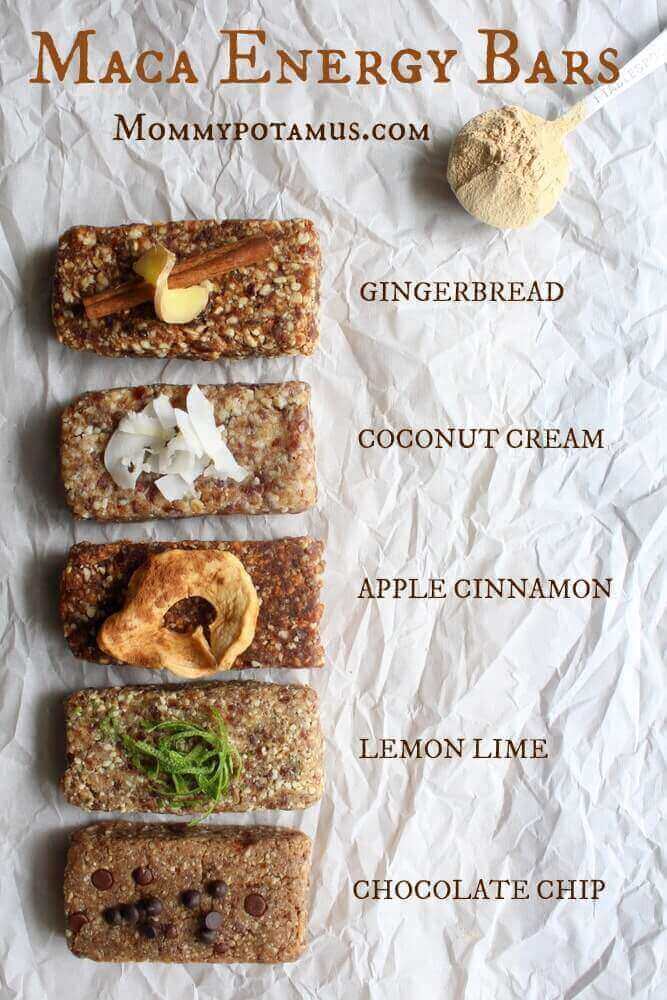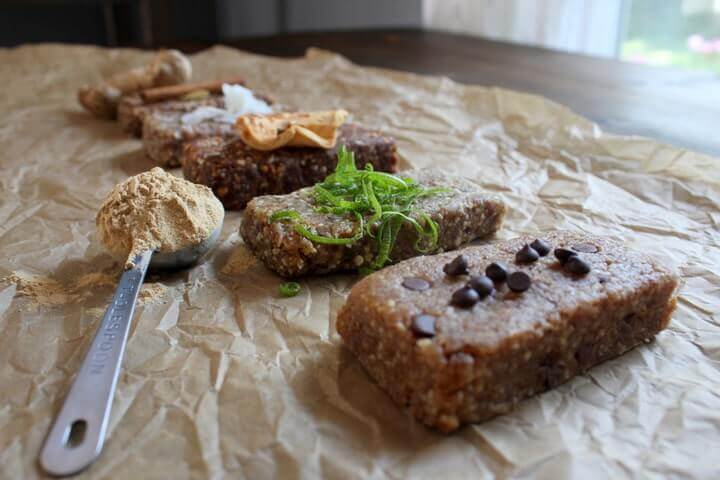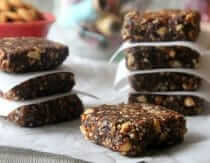I see you there, clutching that coffee mug for dear life. The expression on your face tells me that:
- A) Your little one decided to wake you up at 3am to inform you that she’d changed her favorite color from green to purple
- B) Your other little one decided to give you a makeover when you fell asleep sitting up – hello chunky bangs!
- C) You just found out what happened to the remote and now you wish there was a way to tether it to the coffee table
- D) All of the above
As a mama of three, I get it. Sometimes just getting through the day feels like trying to complete an Ironman Triathlon while singing the alphabet backwards . . . underwater. I’m no stranger to a cup o’ joe or tea, but personally I’ve found that too much turns me into a gremlin.
Even worse, too much caffeine is tough on my adrenals, which I’m trying to take better care of. That’s why I limit myself to one (sometimes two!) cups in the morning and focus on energy boosting alternatives throughout the day. “Alternatives?” you say. “There are ALTERNATIVES?”
Yes, yes there are. Meet my friend maca, superfood of the Andes mountains.
What Is Maca?
Sometimes called Peruvian Ginseng, maca is a radish-like root that grows at 11,000+ feet in the Andes mountains of Peru and Bolivia. Legend has it that Incan warriors used to consume maca before battle to increase endurance, and research suggests there may be wisdom to this tradition.
Maca is an adaptogen, which means that it helps the body adapt to stress and increases stamina. Unlike caffeine, which which is a stimulant, adaptogens have “a normalizing effect upon bodily processes.” (1) Essentially, what this means is that when things get out of whack, maca helps nourish the body and nudge it back toward balance.
How does it do this? Though maca doesn’t contain any hormones, it is rich in several amino acids that serve as building blocks for key hormones. It is also high in minerals such as calcium, potassium, iron, magnesium, phosphorous and zinc, certain vitamins such as B1, B2 and C, and it also contains iodine and several essential fatty acids.
A quick note on iodine: Though it is vital for thyroid health, many experts say that it should always be consumed with selenium. Brazil nuts, fish such as tuna/salmon/sardines, shellfish such as shrimp/scallops/oysters, crimini mushrooms, lamb, chicken and beef are all considered good sources of selenium. I think some of these sources – such as beef and lamb – might have a wide variation of selenium content based on the diet of the livestock.
It’s thought that by nourishing our endocrine system, maca may help boost energy levels, elevate mood, support neurotransmitter production, and increase fertility/libido. (2)
Is Maca Safe For Breastfeeding Women & Children?
According to Web MD, in Peru “maca has been a staple in the diet of men, women, children, infants, pregnant and lactating women, elderly, and the infirm. Only two crops grow in the higher elevations in Peru: potatoes and maca.”
Yep, that’s right. Just like my favorite multi-vitamin, liver, maca is a FOOD. In Peru, it is given to children because it is believed to support cognitive performance and build strong bones. (3) It is also traditionally consumed to support fertility.
Chris Kilham, who teaches ethnobotany at the University of Massachusetts and serves on the Medical Advisory Board of the Dr. Oz show, says that the average person living in the Andes eats about a half pound per day. (4) Drugs.com notes “no safety concerns despite widespread use.” (5)
According to the Botanical Safety Handbook: 2nd Edition, maca is a Safety Class 1A herb – the safest rating possible. This category is described as:
“Herbs that can be safely consumed when used appropriately.
- History of safe traditional use
- No case reports of significant adverse events with high probability of causality
- No significant adverse events in clinical trials
- No identified concerns for use during pregnancy or lactation
- No innately toxic constituents
- Toxicity associated with excessive use is not a basis for exclusion from this class
- Minor or self-limiting side effects are not bases for exclusion from this class”
What Kind Of Maca Is Best?
Most maca powders on the market today are raw, which I personally avoid. Just like with other members of the cruciferous family, raw maca contains certain compounds (glucosinolates) that may suppress thyroid function. Cooking reduces and/or deactivates glucosinolates, which is why Peruvians have traditionally consumed it roasted, boiled, dried and ground into a flour for baking, or made into tea.
Gelatinized maca is cooked, which is why I use it exclusively. It comes in different colors (yellow, red and black), which have different properties. In general, red is favored by women, black is favored by men, and cream is used by everyone.
Where Can I Find Maca?

Gelatinized maca is not widely available, but you can find all three varieties at The Maca Team’s shop. This small, family-run company has taken great care to source potent, fair-trade maca from a small organic farming co-operative in Junin, Peru.
I also love that they pay attention to important details that can dramatically affect potency, like how the roots are grown, processed, and stored.
Now, let’s take a look at those recipes!
5 Maca Energy Bar Recipes
Ingredients
- 1-2 tbsp gelatinized maca powder
- 1 cup macadamia nuts or cashews (preferably soaked and dehydrated to increase digestibility)
- 1 cup dates
- ½ cup shredded coconut
- ¼ tsp vanilla extract (how to make vanilla extract)
Apple Cinnamon:
- 1-2 tbsp gelatinized maca powder
- ½ cup walnuts (preferably soaked and dehydrated to increase digestibility)
- ½ cup almonds (also preferably soaked and dehydrated)
- 1 cup dates
- 1 cup dried apples
- 1 ½ tsp cinnamon
- 1-2 tsp water
Gingerbread:
- 1-2 tbsp gelatinized maca powder
- 1 ½ cups cashews (preferably soaked and dehydrated to increase digestibility)
- 1 ½ cups dates
- ¾ – 1 ½ tsp powdered ginger
- ¾ tsp cinnamon
- ¼ tsp cloves
- 1-2 tbsp water
Lemon Lime:
- 1-2 tbsp gelatinized maca powder
- 1 cup crispy cashews (preferably soaked and dehydrated to increase digestibility)
- 1 cup dates
- ½ cup shredded coconut
- 3 tbsp lime zest
- 2 tbsp lime juice
Chocolate Chip Cookie:
- 1-2 tbsp gelatinized maca powder
- 2 cups crispy cashews (preferably soaked and dehydrated to increase digestibility)
- 1 cup dates
- 2 tsp vanilla extract
- 2 tbsp chocolate chips
- 1 tbsp water
Instructions
- Each recipe makes about 4 bars. The amount of maca in each bar is approximately 3/4 – 1.5 teaspoons, depending on if you use one tablespoon or two in the recipe.
- Add all ingredients to a food processor and blend until the mixture is finely chopped. When you think it might be ready, remove the lid and pick up a piece to roll in the palm of your hands. If it sticks together it’s ready to form into bars. If it’s crumbly, it either needs to blend a little more or it needs a little moisture. If it is very dry, turn the food processor on and pour a teaspoon of water through the opening in the top. Continue adding water as needed until the mixture sticks together. I’ve found that somewhere between 1 teaspoon and 2 tablespoons is usually enough.
- When the mixture is ready, press it onto wax or parchment paper and form into bars. Wrap each bar individually and store in the freezer until needed.
- This post has been sponsored by The Maca Team. Thank you for supporting the companies that I believe in, as it helps me to continue developing recipes and researching topics to share with you.







